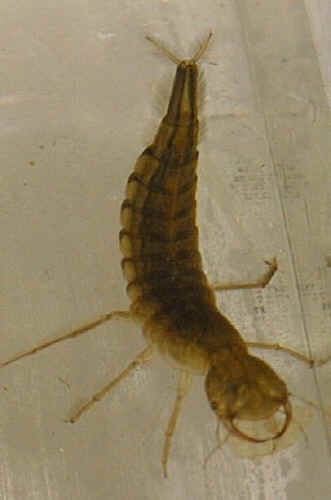Just a quick look at our growing tadpoles! We had them in a giant container at the side of the house and I had the children looking at them from time to time. Until the children and I realised that something was killing them. One little boy spotted something moving in the water and after further investigation, we found out that the container was inhabited by other "pond" creatures. Our killer was called (as we found out later) the Great Diving Beetles. The children were both devastated it was killing the tadpoles but they were also so intrigued by the "monster" (as one little girl called the beetle).

So armed with our laptop, Tanya and I and the children did a little bit of research and we found out that these larvae are the young stage of a large water beetle. They live in freshwater ponds and are fierce carnivores. They sink their large, pointed, sickle-shaped jaws into their prey. Digestive enzymes are pumped into the body of the prey and the resulting 'soup' is sucked back up. Nice!!! And guess what? Their favourite prey include tadpoles!! But they will eat anything they can catch! We even saw one of them with a poor little tadpole caught in its jaws... So, we decided we couldn't let the beetle kill the rest of the tadpoles. We had to save the remaining ones. I asked the children " what can we do then to save them?". Some offered to kill the beetle. I explained that the beetle was entitled to live just as much as the tadpoles and that it wasn't killing them because it was a nasty bug but because it needed to eat to grow. So some other children came up with the idea to scoop up the tadpoles and put them in a different container and to put a lid on it at night time to prevent any other bug to get in. I found a much smaller bucket,and Operation "Save the Tadpoles" took place. We placed the bucket by the preschool entrance (putting them in a large container was my husband's great idea!!!).
Needless to say that the larvae was not very popular among the kids!!
Yet, they were completely fascinated by what had happened and by the sight of the larvae.They showed a great sense of wonder and showed good reflection skills and problem-solving skills too, in their attempt to care for their environment.They felt confident that their ideas were taken into consideration and that we, adults, listened to their suggestions. It was also a great practical way to learn how to respect life, any type of life and to learn about their natural environment. The whole learning experience showed them as well that they were well able to interact with other children by listening, duscussing and they all took turns in the conversations, either by offering solutions or by expressing they sadness, their fear or their anger towards the beettle.
To enhance their learning, I suggest to introduce them to the life cycle of the frogs using the Montessori 3-part cards and learning a bit more about what frogs do using this book below:
Yet, they were completely fascinated by what had happened and by the sight of the larvae.They showed a great sense of wonder and showed good reflection skills and problem-solving skills too, in their attempt to care for their environment.They felt confident that their ideas were taken into consideration and that we, adults, listened to their suggestions. It was also a great practical way to learn how to respect life, any type of life and to learn about their natural environment. The whole learning experience showed them as well that they were well able to interact with other children by listening, duscussing and they all took turns in the conversations, either by offering solutions or by expressing they sadness, their fear or their anger towards the beettle.
To enhance their learning, I suggest to introduce them to the life cycle of the frogs using the Montessori 3-part cards and learning a bit more about what frogs do using this book below:



Good thing you caught it and still have some tadpoles left! I'm still sad about ours : (
ReplyDelete